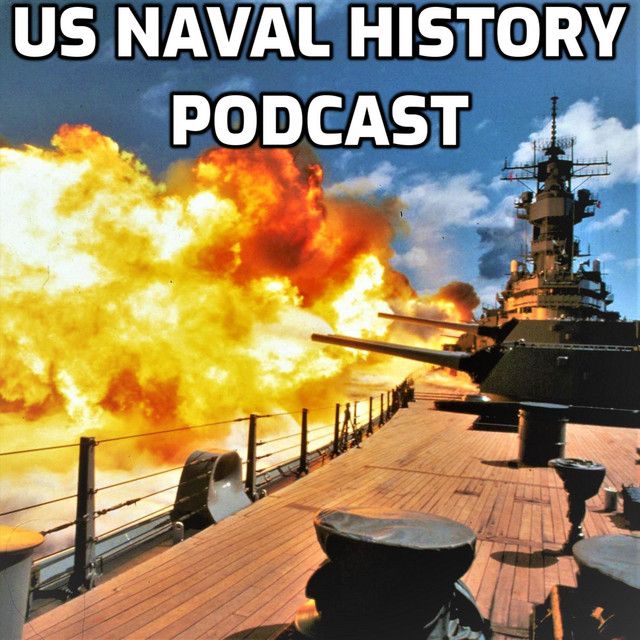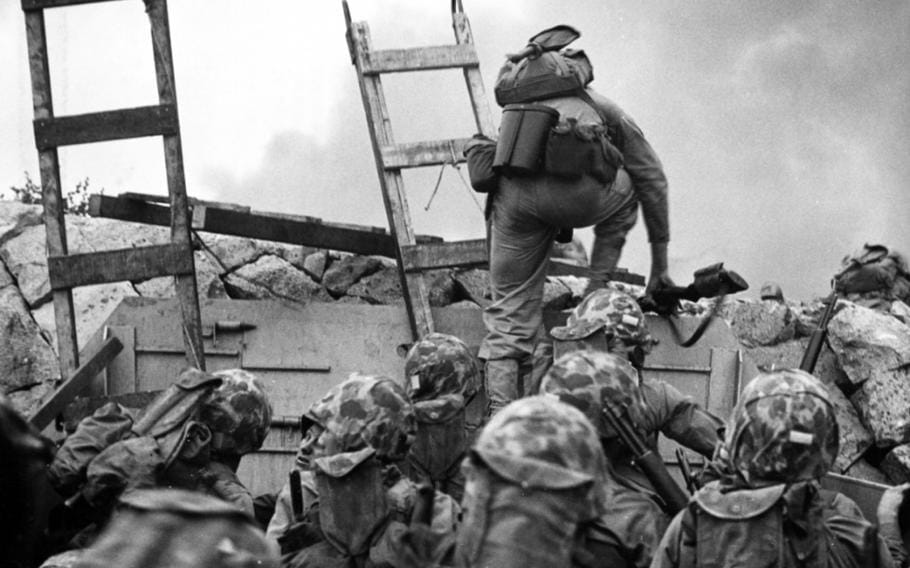Welcome to the Cold War...or as it very well may be known in the future, the First Cold War.
Welcome to the Cold War, an era of small wars and big bombs looming over a geopolitical tinderbox balance between East and West, between totalitarian communism and more or less liberal, more or less democracy. This post is the first of six posts on the general naval history of the Cold War, which started even before the end of World War Two and would last for the next almost 50 years. The first hot conflict of the Cold War took place in what was then one of the poorest countries in the world, Korea. This is a conflict which ripped apart World War Two alliances for good and sent American GIs and Sailors into direct, meat grinding conflict with their North Korean and Chinese counterparts just five years after the horror of World War Two. This post is about the hot beginnings of the Cold War, and one of the most ambitious, successful amphibious invasions of all time, and of the United States Navy's role in the conflict.
A (Very) Brief History of Korea
Before I get started on the fighting, quick background on the Korean Peninsula, conveniently situated between the three great powers of East Asia and thus a battleground for centuries.
Genghis Khan and his Mongol horde swept into Korea in the 13th century, and for the next ~600 years, the Hermit Kingdom of Korea pledged its loyalty to the Mongol-descended emperors of China. The rugged coastline and rough seas around the Korean peninsula made isolation possible for a time. But after our American Civil War, inspired by Commodore Matthew Perry's success in opening up Japan a decade earlier, the Navy began sending armed missions to open up the Korean kingdom for trade. For two decades, the Koreans resisted and fired on American warships attempting to make contact before finally signing a trading and friendship treaty response to threats closer to home, specifically the outward looking Japanese and Russian empires.
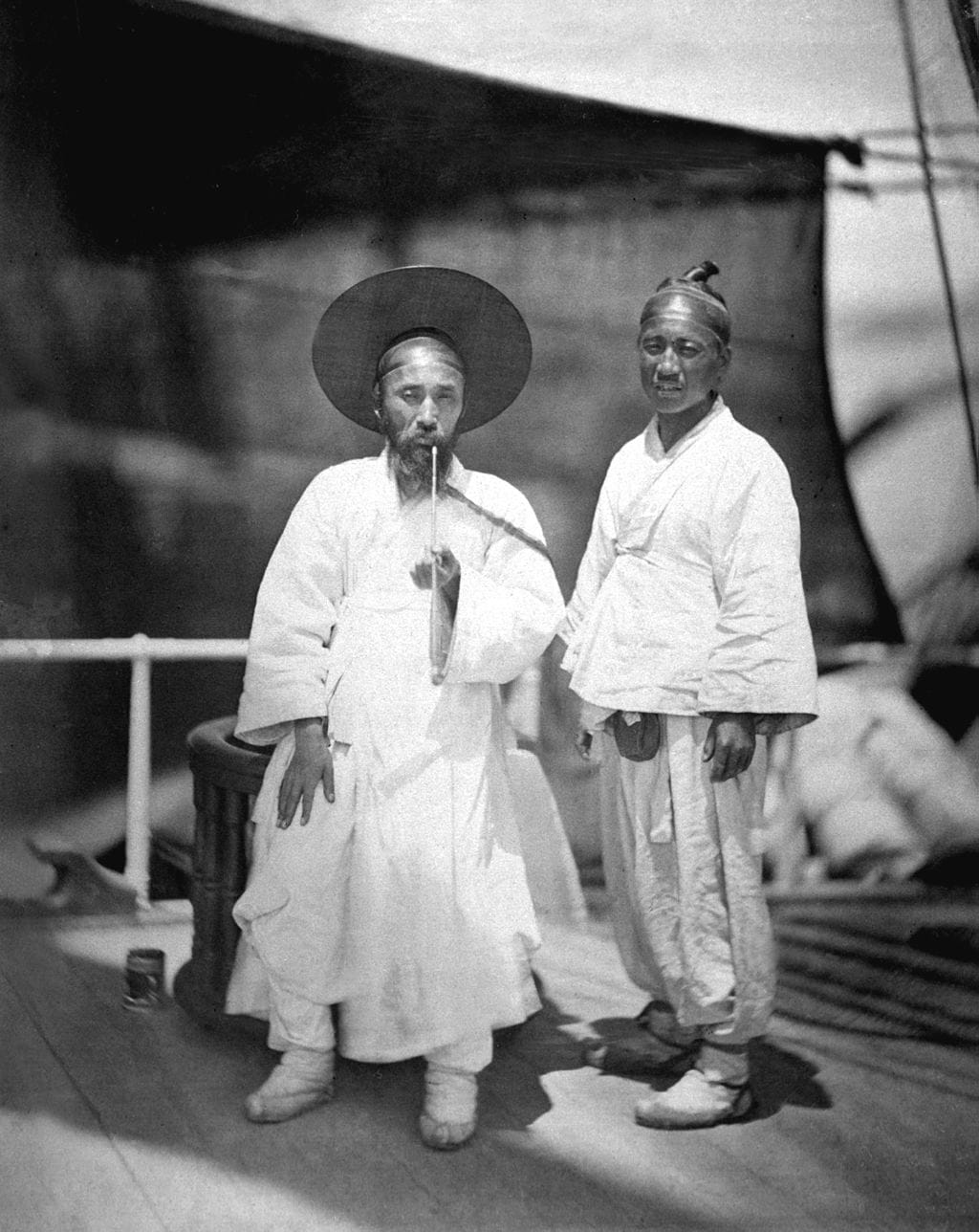
The Imperial Japanese Navy's utter destruction of the Chinese fleet in the Battle of Yalu in 1894 ended Beijing's domination of Korea, and the Japanese destruction of two successive Russian fleets during the Russo-Japanese War of 1904-1905 led the Japanese to dominate the Korean peninsula. In 1910, the Japanese outright annexed the former Kingdom of Korea as its first colony. Brutal Japanese rule lasted until Japan's surrender in 1945. At the stroke of a pen aboard the Battleship Missouri, anchored in Tokyo Bay, World War Two ended.
Post-WWII US Naval Dominance
Afloat, the United States Navy with supreme. From the pre-war strength of 11 battleships and seven aircraft carriers, the United States Navy at the end of World War Two represented more than 70% of the combined world naval tonnage, wielding 120 battleships and cruisers, 27 fleet carriers, more than 65,000 other warships and landing craft, and more than 4 million men and women in uniform to man and support this greatest fleet in world history. Over the next year and a half, propelled by a victorious public who wanted nothing more than their sons, daughters, husbands and fathers home as soon as humanly possible, three and a half million sailors were discharged by the end of 1947. The cost of the war had saddled the country with a huge debt, and back when we believed that it was important to pay off the debt, there wasn't much interest in footing a bill for these giant overseas garrisons and fleets.
This was an era of intense inter-service budget rivalry, and the Navy lost just about every battle on this new public relations and Capitol Hill front. Thousands of ships were scrapped and thousands more were mothballed into reserve fleets along the coasts. But despite the public's elation, the dominant American economy, and our benign postwar intent, the next war had already begun even before the Japanese surrender.
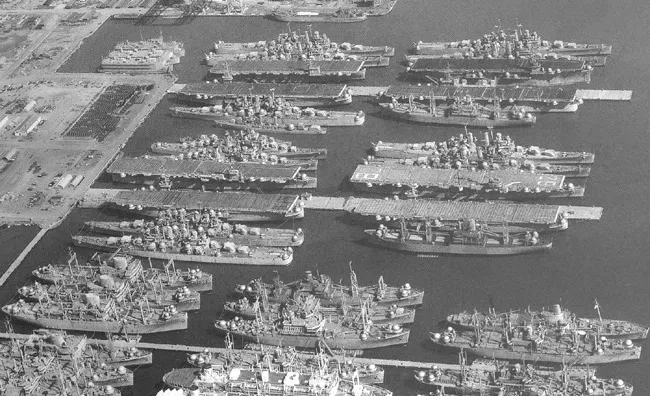
After World War Two, Allied leaders set up a United Nations trusteeship over Korea, with the United States occupying Korea south of the 38th parallel and the Soviet Union to the north. This was intended to be a temporary dividing line, but emerging Cold War and post-World War Two balance of power politics disrupted the process of Korean unification.
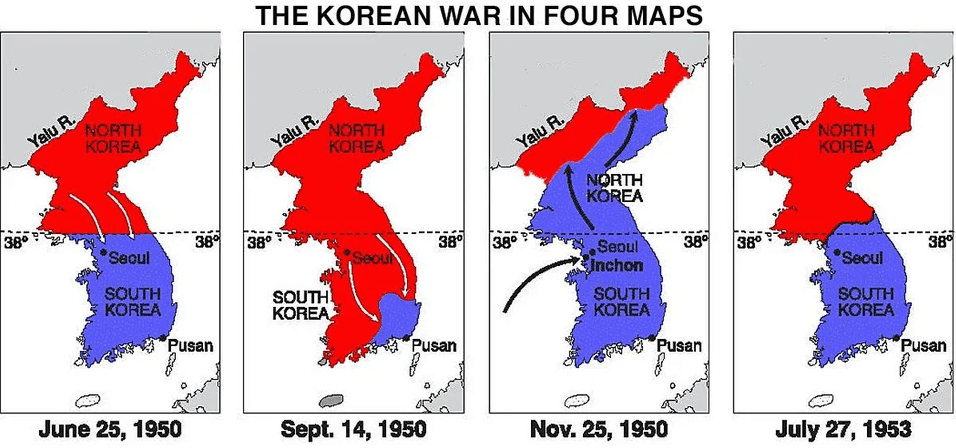
The Iron Curtain Descends
As the Soviets under the brutal Joseph Stalin suppressed basic freedoms, undermined governments in Poland, Czechoslovakia and other Eastern European nations that had been occupied by the Red Army, the US and our western allies realized that we had a major problem on our hands. Winston Churchill gave his famous Iron Curtain speech as Moscow fueled a communist insurgency in Greece and made territorial demands on Turkey and Iran.
From Stettin in the Baltic to Trieste in the Adriatic an iron curtain has descended across the Continent. Behind that line lie all the capitals of the ancient states of Central and Eastern Europe. Warsaw, Berlin, Prague, Vienna, Budapest, Belgrade, Bucharest and Sofia, all these famous cities and the populations around them lie in what I must call the Soviet sphere...
(You can Read the full text of the speech here, or watch the video here.)
In 1946, Mao Zedong's Communist Chinese launched an all out civil war against Chiang Kai-shek's nationalist government. In 1949 Mao's Communist armies drove the last remnants of Chiang Kai-shek's army from mainland China to the island of Taiwan. Only the complete lack of a navy prevented a total Chinese Communist Party victory. Meanwhile, the Soviet menace grew even darker in 1949 when the USSR detonated its first atomic bomb, ending the US monopoly on weapons of mass destruction.
Korea, divided
In Korea, the Soviets supported the former anti-Japanese guerilla, Kim Il-Sung, the grandfather of the lovely current ruler of North Korea, Kim Jong-Un. The US backed the American educated, stridently anti-communist Syngman Rhee, who was elected as the first president of the Republic of Korea (aka South Korea). The following month, Kim Il-Sung announced his leadership of the ironically named Democratic People's Republic of Korea (aka North Korea). (As a side note, isn't it funny how the more your country's name seems to insist that you are a democracy, less democratic your government is. I think it's pretty telling that even the most despotic dictatorships generally feel compelled to pretend that they're democracies.)
Over the next year and a half, the two Korean governments sent agents, saboteurs and raiding forces across the 38th parallel and fought artillery duels along the dividing line. The US and the USSR withdrew their combat troops, but the Soviet Union left behind an extensive military advisory group and huge stockpiles of excess WWII-vintage munitions and equipment, including tanks, artillery and combat aircraft. On the U.S. side, President Truman was wary of giving Syngman Rhee heavy offensive equipment that might tempt him to attempt to unify Korea by force and draw the U.S. into potential conflict with the Soviet Union. The U.S. withdraw did not leave tanks, heavy artillery or aircraft behind. The U.S. had unofficially embraced the containment strategy of not directly confronting communism where it was established, instead focusing on preventing its spread to new countries.
Key leaders in Washington had also argued that the United States should reduce defense spending significantly because we had the atomic bomb, arguing that the American atomic arsenal would deter or defeat Soviet invasions of Western Europe. In this era of dramatically cut budgets. Inter-Service rivalry for the remaining spending grew acrimonious. Service chiefs plotted against each other and argued that technology and made the other branches less important, and thus less worthy of funding than their branch. It was in this setting that in 1950, international geopolitical miscalculations led to war.
Practically since the day that Korea became independent. Kim Il-Sung had been begging his communist great power neighbors China and the Soviet Union to support a North Korean invasion of South Korea. But the Chinese and the Soviets had refused him every time out of fear of conflict with the world's most powerful war machine, the United States military. Stalin was focused on Europe, and Mao on his planned invasion of Taiwan to wipe out the last of the nationalists. Washington also wanted to avoid war in Korea, but Secretary of State Dean Acheson made a public slip-up and seemed to indicate that the United States is willing to fight to defend Japan in the Philippines, but not South Korea or Taiwan. That was taken as assurance enough (and here I'm skipping over a lot of diplomatic detail) by the Soviets and Chinese to greenlight Kim's invasion of the militarily weaker South Korea.
The North Korean Blitzkrieg
Before dawn on June 25th, 1950, whistles blew for advance and artillery opened up all across northern side of the 38th parallel. It was late evening at Independence, Missouri, when President Truman got the war call. On the other side of the world, in divided Korea, the communist North Korean People's Army had flung more than 100,000 soldiers across the border of the 30th parallel into the Republic of Korea. In the mere 7 hours since the beginning of the invasion the poorly equipped South Korean troops had dissolved into a full retreat against the North Korean army, bolstered by Soviet T-34 tanks and veterans of the war against the recently vanquished nationalist forces in China. With roads choked by refugees, the South Korean army could not even retreat south to regroup.
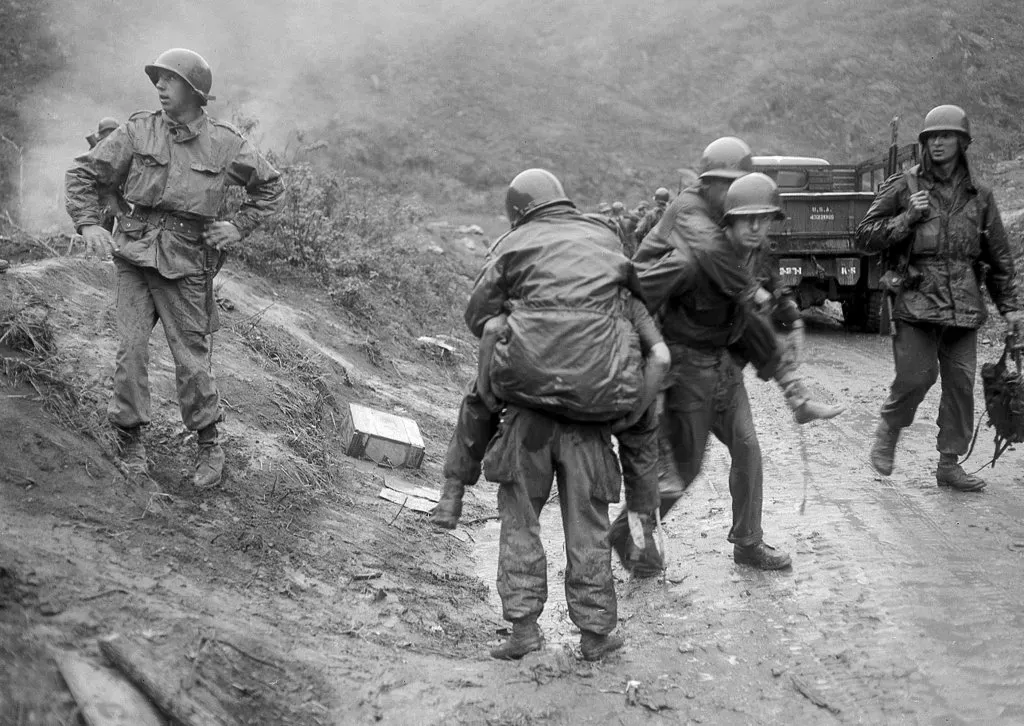
Over the next several days, Truman authorized the Air Force to strike at the invading North Korean armies from our air bases in Japan, and local army units were rushed to the peninsula to reinforce the struggling South Korean army. On June 27th, Congress overwhelmingly approved extending the draft, and the United Nations voted to assist the Republic of Korea. The Navy was ordered to blockade the Korean coastline less than five years after the end of World War Two. The major powers of the world were again gearing up for war.
